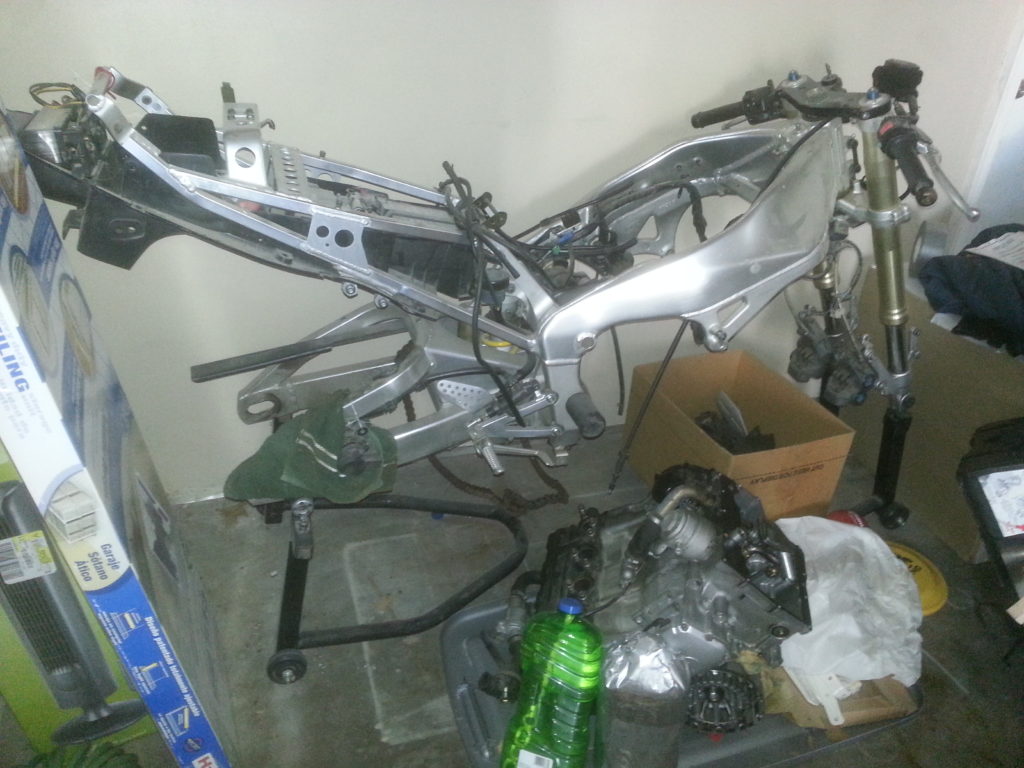It was Sunday morning and I was finishing up my second cup of coffee while learning about the origins of the three pointed star in Hemmings Sports & Exotic Car. It was a morning that warranted nothing more, nothing less. Then the text came.
“Umm…my car won’t start.”
I’m sure many of you can relate to such a text message. It is the sort of text message that makes you realize that you may have overreached your bounds when talking about the joys automotive maintenance while at a party. The sort of message that pulls you away from the serene simplicity of a Sunday morning and immediately ratchets you into fight or flight mode. You have three options when such a message arrives:
1. Ignore.
2. Make an excuse.
3. Accept challenge.
If you intend to keep friends, and you truly don’t have other pressing matters at hand, there is really only one option: “I’ll be over in 30 minutes”.
This particular friend was in the homestretch of a weekend-long project concerning the deletion of the A/C system from his beloved Mustang. As he was finding out, a forum “how to” is not exactly the end-all when it comes to procedural completeness. As I started rooting around in the engine bay, looking for loose wires and the sort, I began coming up with theories for his non-start condition. Everything looked good that I could see; no pistons were outside of their cylinders. Pulling my head out of the engine bay, something caught my eye in that dimly-lit garage.
A bike.
Well, what it looked like was a bunch of junk piled in the corner, but a keen eye could spot the beautifully welded aluminum frame, gold anodized forks and a hunk of engine lying beside it all. This wasn’t just any bike; this was a long-since-cherished, turn-of-century, Japanese superbike. A second-year Yamaha R1 – and it was calling me.
Trying to contain my excitement, I returned to the matter at hand. Nope, nothing stood out. I was getting ready to mark it up as a failure. This Mustang needed a real mechanic.
“What’s the deal with that bike in the corner?” I asked.
As it turns out, my friend’s roommate bought the bike 8 years ago as an eBay impulse purchase. Having never ridden before, he didn’t know the difference between a starter bike and full-fledged racing machine for the road.
At that time, the bike was in perfect original condition. It could be predicted that things wouldn’t end well for the R1. Long story short, the bike had met the pavement a few times and I don’t mean just the tires. One of these little ‘oopsie’ moments caused the transmission to begin a fit of erratic shifting. The roommate had “ridden it in 3rd gear” for a few months because he couldn’t get it to shift correctly. After growing tired of his single-speed superbike, he began to tear the bike down, piece by piece, in an attempt to get inside the transmission. A combination of losing interest and not having the correct tools for the job ended up in a 7 year scattered slumber for this poor bike. Oh dear.
We finally figure out why my friend’s car won’t start. A quick Google search shows that many a Mustang enthusiast has deleted their A/C only to find that their car won’t start. As it turns out, the crank position sensor does need to be plugged in for the engine to run. Who knew?!
Finally, the window was open to make a move on this neglected bike. “Can I talk to your roommate?”
An hour later I was the proud owner of probably the cheapest Yamaha R1 in the country. For handsome sum of $300 and a signed title, I stuffed the R1 frame and its remains into the back of my 4Runner and headed home.
The minute you take on a project like this is the minute start to question your sanity. The sheer state of all the boxes and parts scattered around the garage will send most people running for the hills.
It’s important, however, to keep your cool and realize you don’t yet have much money invested in this. At worst it will be a learning experience. At best it will be an education.
The first step with a project like this is to determine how deep you want to go. At first I thought I would just reassemble everything and reassess the shifting problem. However, I figured that it would be a shame to reassemble everything just to determine that there indeed was something wrong with the transmission.
When you are presented with a machine that is more apart than it is together, you see that there isn’t much more work left to do to get inside the inner workings; the real fiddly bits of the engine and transmission. So with that, I went in with an objective of inspecting the state of the transmission. I mean, the previous owner had already gotten this far:
Check out the next installment when I go into the separation of the engine cases and ultimately take a plunge that put my bank account into shock.
